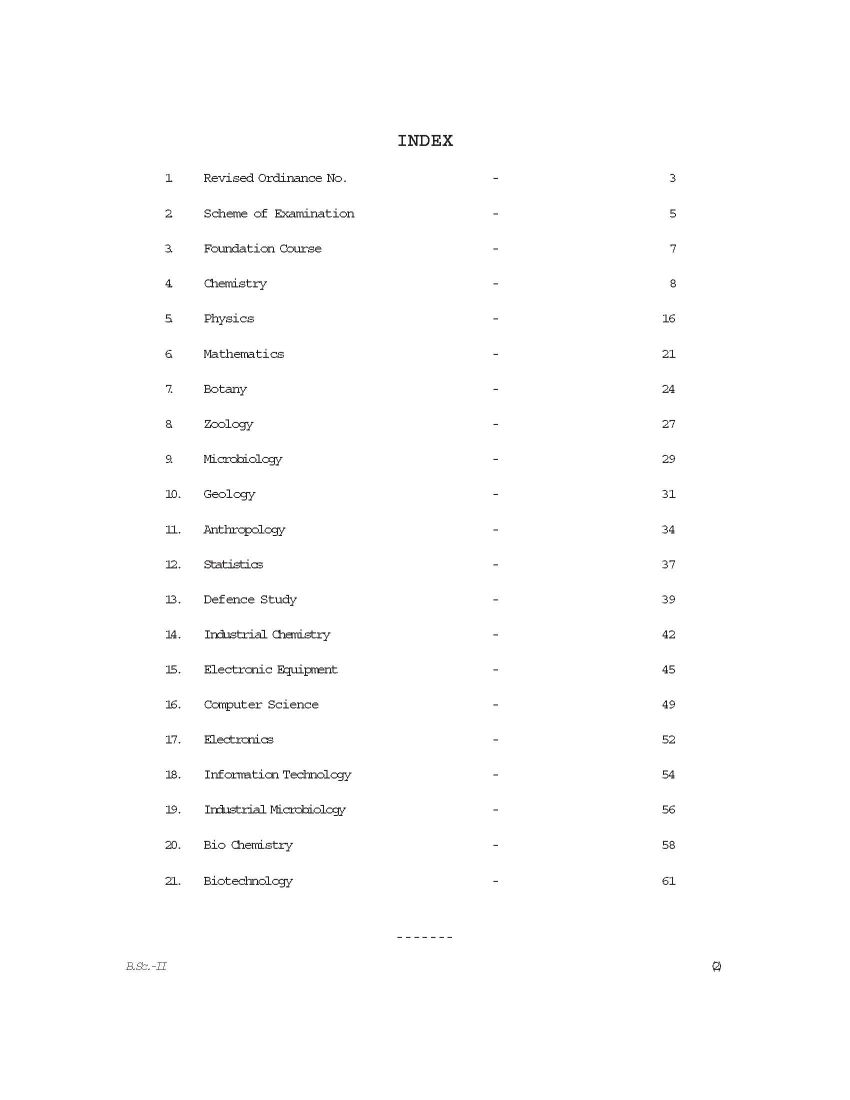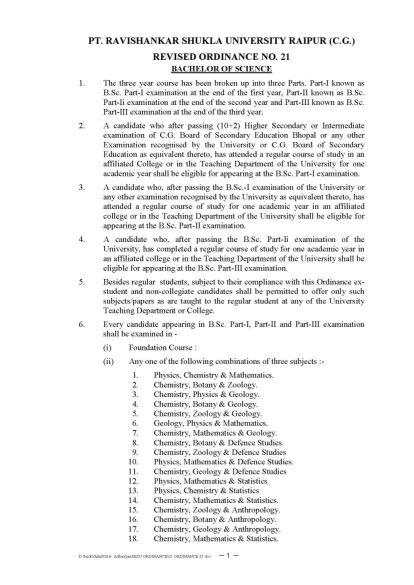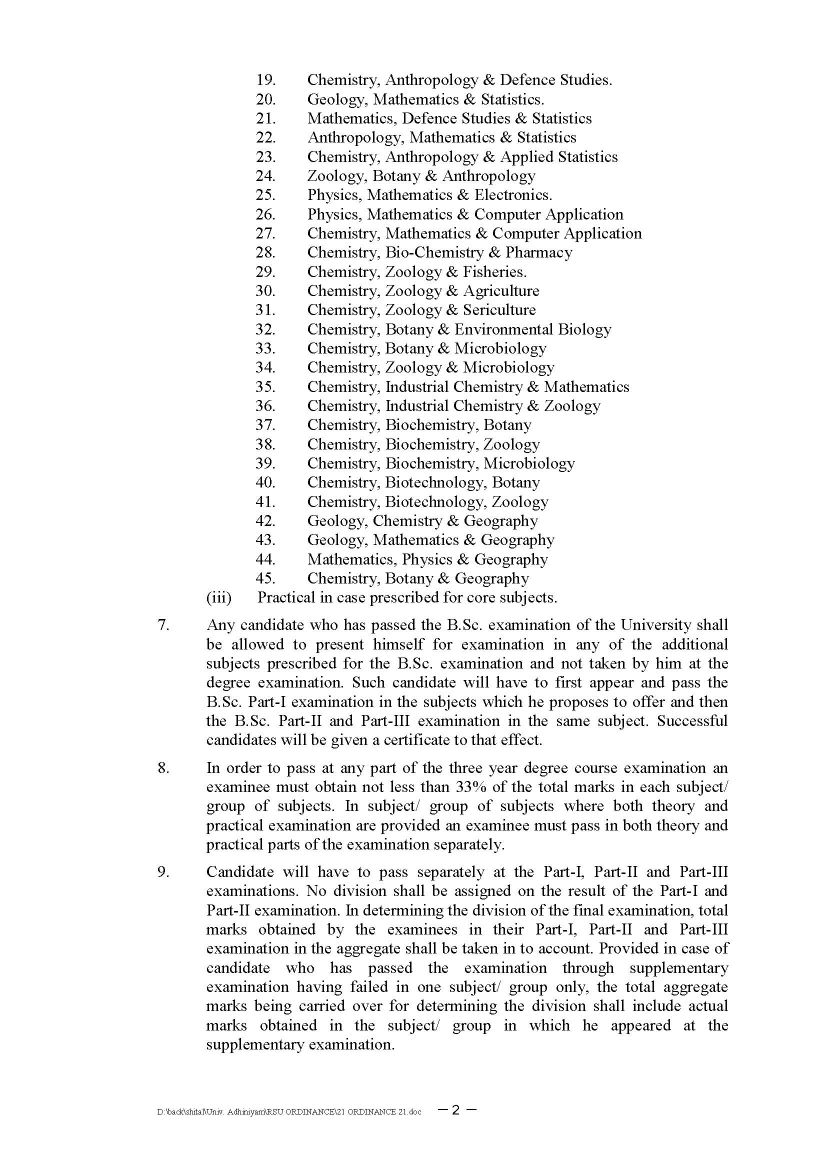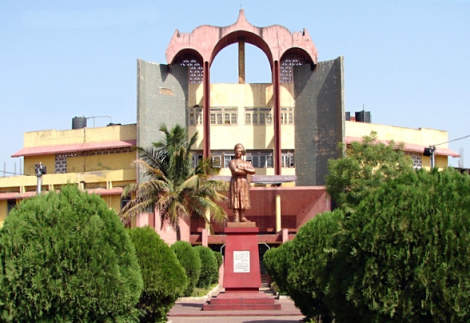| Re: PRSU BSC Syllabus
As you want I am here providing you syllabus of BSC II year Physics –II course offered by Pt. Ravishankar Shukla University.
BSC II year Physics –II course Syllabus:
Syllabus Includes subjects :
Waves, Acoustics & Ultrasonics
Relativity , Nuclear Physics & Statistical physics
Optics & Lasers
Electronics
Practical Course
(Annual Pattern)
Practical Course
(Annual Pattern)
B.Sc.II Year PHYSICS
Semester - III
Waves, Acoustics and Ultrasonics)
Unit –I: Waves:
Wave velocity and particle velocity, Differential equation of wave motion, Energy of
a plane progressive wave, Equation of motion of a vibrating string, Velocity of
transverse waves along a string, Frequency and period of vibration of a string,
Problems.
Unit—II: Stationary waves:
Analytical treatment of stationary waves (closed end& open end pipe at the other
end), Investigation of pressure and density changes at displacement Nodes and
Antinodes, Distribution of Energy in a stationary wave, Energy is not transferred in a
stationary waves, Problems.
Unit–III: Acoustics:
Noise and Musical sounds, Loudness, pitch, Quality, Intensity of Sound, The Decibel,
The Phon , Bel, Reverberation, Reverberation time, Absorption coefficient, Sabine’s
formula, Acoustical demands of good auditorium. Transducers and their
characteristics, pressure microphone, moving coil loud speaker, process of recording
and reproduction of sound in compact disc, Problems.
Units–IV: Ultrasonics
Ultrasonics, properties of ultrasonic waves, Piezo-electric & magnetostriction
effect, production of ultrasonic waves by Piezo electric & magnetostriction
oscillator, Detection of ultrasonic waves, acoustic grating, Application of ultrasonic
Waves, Problems.
Relativity, Nuclear Physics and Statistical Physics
Unit I: Relativity
Introduction, frame of reference, , Postulates of Special Theory of Relativity, Galilean
Transformations, Lorentz Transformations, Length Contraction, Time dilation, Velocity
addition, relativity of mass, Mass energy relation.
Unit II: Nucleus & Nuclear model
Introduction, General Properties of Nucleus, Theory of Nuclear composition, Proton-Electron
Theory, Proton –neutron theory , Binding energy, Semi-Empirical mass formula, Nuclear
models , Liquid Drop Model, shell model .
Accelerators and Detectors
Introduction to accelerators & Detectors , Linear accelerator, Circular accelerators Cyclotron,
Synchrocyclotron, Ionization chamber, Geiger Muller counter,
Unit III: Radioactivity
Introduction , Charge of Alpha particles, Range of particles, Geiger-Nuttal law, The Age of
the Earth, Biological effects of radioactive radiations
Unit IV: Statistical Physics
Introduction , Phase space, Micro and Macro states, Thermodynamic probability,Entropy &
probability , Calculus of Probability , Classical Statistics - Maxwell-Boltzmann statistics and
Distribution law, Quantum Statistics- Bose- Einstein statistics and Distribution law, Fermi-
Dirac statistics and Distribution law. Photon gas , Electron gas
Optics and Lasers
Unit–I: Geometrical Optics
Cardinal Points of an Optical System(six points), Newton’s formula ,
Coaxial Lens System (equivalent focal length and cardinal points), Huygens
Eyepiece, Ramsden Eyepiece and their cardinal points, Problems.
Unit–II: Interference
Interference due to Reflected light (Thin film), Newton’s Rings,
Determination of wavelength of Sodium light, Michelson Interferometer,
Determination of wavelength of monochromatic light, Difference in wavelength
between two neighbouring spectral lines, Problems.
Diffraction:
Fresnel and Fraunhofer diffraction, Fraunhofer’s diffraction due to single and
double slit, Plane diffraction grating, Determination of wavelength of Sodium light,
Rayleigh criterion, Resolving power of grating, Resolving power of Prism, Problms.
Unit–III: Polarization
Polarization by Reflection, Brewster’s law, Malus law, Double refraction, Nicol
prism, Nicol prism as an analyzer,Huygen’s explanation of double Refraction in
Uniaxial crystals , Elliptically and Circularly polarized light, Quarter wave plate, Half wave
plate, Optical Activity , Specific rotation, Laurent’s half shade polarimeter,
Problms.
Units–IV: Lasers
Spontaneous & stimulated emission, absorption, Einstein coefficients (definitions),
Population inversion, Optical & electrical pumping, Cavity resonators, Properties of
lasers, Ruby laser, Helium-Neon laser, Applications of lasers.
Electronics
Unit–I: Transistors
Bipolar Junction Transistors (BJT):
Introduction, Load line, Transistor biasing, voltage divider bias, Hybrid parameters (or h
parameters) Determination of h-parameters, common – emitter amplifier, Analysis of
common emitter amplifier and common – collector amplifier using h-parameters (current
gain, voltage gain, power gain, input resistance and output resistance)
Field Effect Transistors:
JFET: Principle of working, static characteristics, JFET parameters, Transfer characteristics,
JFET as an amplifier.
MOSFET: Construction and working in Depletion and Enhancement mode, Types of
MOSFET, Characteristics of MOSFET.
Unit–II: Operational Amplifier:
Theory of differential amplifier, block diagram of Op-Amp, schematic symbol, ideal
Characteristics, input offset voltage; input offset current, input bias current, input impedance,
Output impedance, open loop gain, CMRR, Supply voltage rejection ratio ( SVRR), Large signal
voltage gain, Slew rate, Ideal OP-Amp, Equivalent circuit of OP-Amp.
Applications of Op-Amp:
The differential amplifier, Inverting amplifier, non-inverting amplifier.
Unit III: Oscillators:
Hartley oscillator, Colpitt’s oscillator, R-C Network, Phase shift oscillator
Unit IV: Regulated Power supply :
Introduction, ordinary D. C. power supply, Voltage regulation, minimum load resistance, Regulated
power supply, Need of regulated power supply, Types of regulators, for low voltage, for high voltage,
Zener diode voltage regulator,, Transistor series voltage regulator Series feedback voltage regulator
short circuit protection, Transistor shunt voltage regulator, Definition of Line and Load regulation,
Problems.
|



